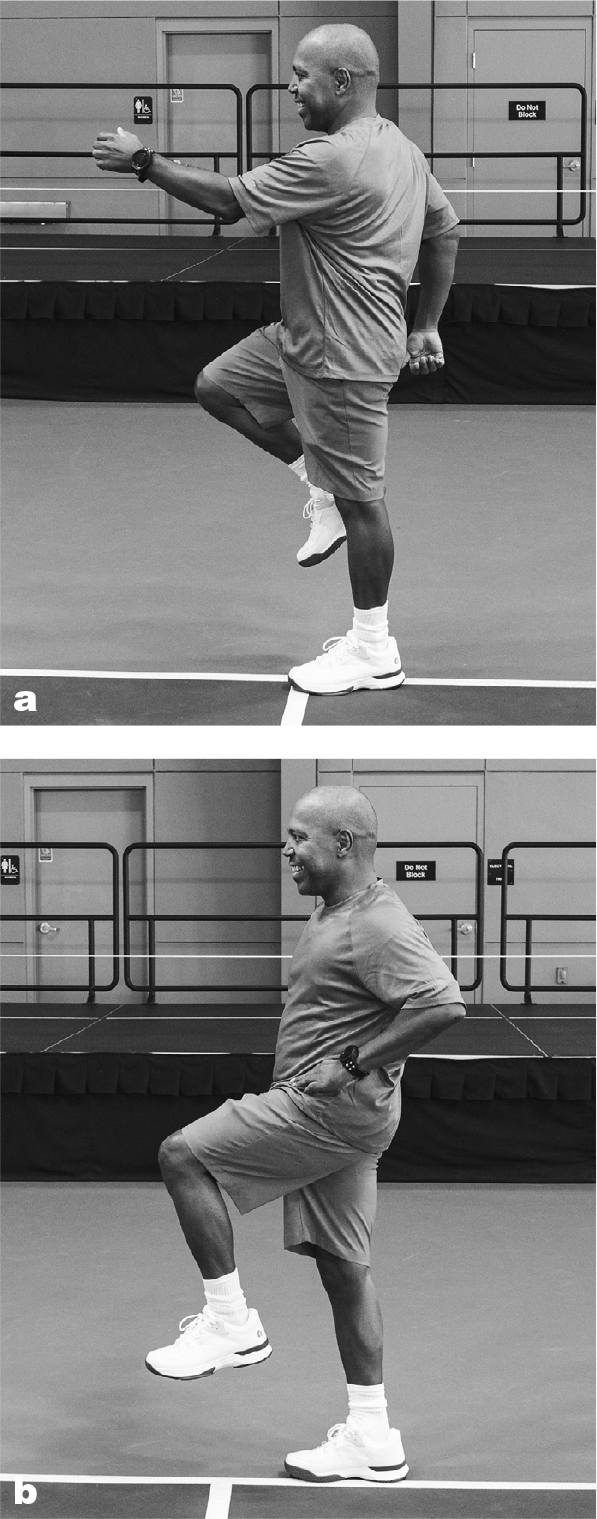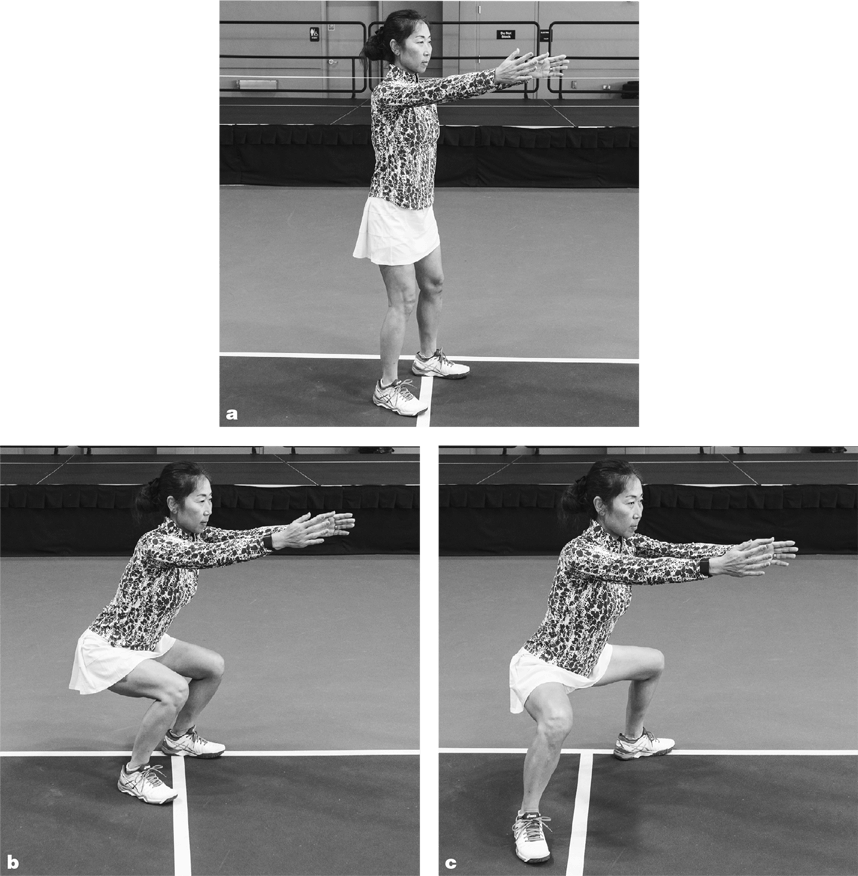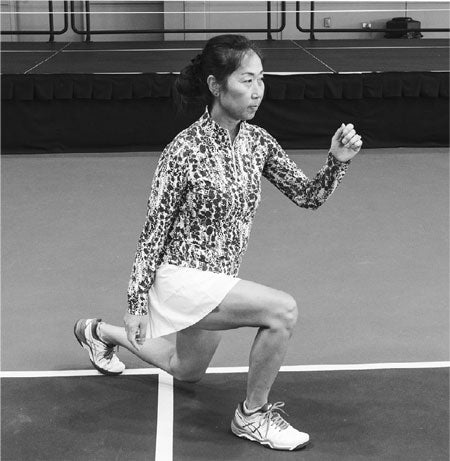Getting Ready to Play
This is an excerpt from Pickleball Fundamentals-2nd Edition by .
Generally, start with whole-body exercises and ones emphasizing large muscle groups like the thighs and core before moving on to your extremities. This safely but quickly increases your heart rate, breathing, and circulation, sending extra oxygen and warmth to your entire body. Developing a regular routine ensures that every part of the body is included, so many people prefer repeating the same pattern every time they warm up. Journaling both your warm-ups and experiences during play is a great way to keep track of your progress, physically and competitively, and spot any areas you may need to work on.
Following are some suggestions for warm-up exercises. If you have injuries or particular physical conditions that make certain movements difficult, substitute motions that work for you, while making sure all the main body parts receive a thorough but gentle warm-up. The suggestions here need no equipment like rollers, bands, or weights, just your body. However, if you already have a sensible warm-up routine that works for you using these tools, do what works for you.
Do not “bounce” (bob up and down) or push a motion to the point that it hurts. “No Pain No Gain” does not apply to either warming up or to playing pickleball.
General Warm-Ups
Start with a vigorous walk, swinging your arms or circling them from your shoulders (figure 1.1a). An exercise bike that works the arms, an elliptical machine, or a slow jog are good substitutes. If walking, you can add marching, with knees raised to around hip or waist height as you feel your body warming (see figure 1.1b). Another familiar dynamic whole-body exercise that can be adjusted for differing fitness and intensity levels is the jumping jack. Do some combination of these for at least a few minutes, making sure you break a sweat or feel your respiration and heart rate increasing.

Squats
Squats are a great way to warm up and work out your lower body, hips, and core. Stand with your feet about hip width apart. Clasp your hands in front of you, out from your chest (much like the pickleball “ready” position we will be talking about later). Engage your stomach muscles while sitting down on an imaginary chair behind you, shifting your weight back onto your heels as you keep your chest out and up. Go no further down than when you feel your heels start to rise off the floor or your chest and shoulders start to round or lean forward. Your knees should not extend past your toes (figure 1.2a-b).
Stand up in a controlled motion, keeping your chest out, shoulders square, while pushing down through your heels. Your core muscles should stay engaged the entire time. As an option, you may alternate feet, stepping out to each side about 1 foot (30 cm) for a wider-stance squat. This replicates a movement often needed to reach the ball in game play (see figure 1.2c). Repeat 10-15 times.

Lunges, Front-Back and Side-to-Side
Start standing, with feet about hip width apart. Step forward with one foot, striding out farther than a normal step to land with the forward foot flat on the ground, the rear foot’s heel rising (figure 1.3). Lower yourself over the extended foot with control and balance, bending the front knee to about 90 degrees. Your shoulders and torso should stay upright and core tight.
Push off from your front foot with enough force to return to the standing position. Lunges can be done with the hands on top of the forward, flexing knee, clasped in front of your chest, or at your sides. Repeat 10-15 times, alternating left and right foot forward.
If it is easier at first, you can also start after the stride, with one foot staying forward, lowering your body down by flexing both knees to about 90 degrees, then pushing down into both feet to return upright. For this “‘static” lunge, the feet will remain in one position for the repetitions, before you switch which foot is forward.
Just as for the squats, the knee should not extend past the foot while doing either of these lunges.

Arm Circles
This exercise is another good way to loosen the arms and shoulders. Extend your arms to the side with the palms facing down (figure 1.4). Make small circles with the arms 8 to 10 times forward and then 8 to 10 times backward. Then repeat the exercise with larger circles reaching overhead and down near the outside of the thigh.

While most of the body positions and movements required for playing a game of pickleball are predictable, some movements require a body part to stretch farther than is comfortable. You need to warm up before beginning a game and prepare your body to handle any movements that you might face in a heated rally. A common, unexpected movement in games is reaching forward or to the side with the paddle arm while taking a sudden lunging step, almost like a fencer thrusting. This type of movement is often used as a player attempts to reach a ball that drops just over the net or almost out of their reach. Warming up the legs, hips, and shoulders well before the game will enable you to perform this action safely from the very first rally.
More Excerpts From Pickleball Fundamentals-2nd EditionSHOP

Get the latest insights with regular newsletters, plus periodic product information and special insider offers.
JOIN NOW


